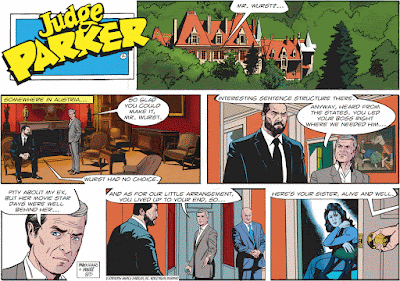 |
| Halsam American Bricks only had three different shapes. |
Introduction
I had so much fun doing the 100 Toys Build that I decided to start another vintage toy build project. This time the subject is Halsam American Bricks. Its a building toy with a somewhat convoluted history.
Early days
Halsom Products Co. was established in 1917. Their specialty was wooden toys. Early on they perfected a method of making pressed wood shapes. From the 1920s through the sale of the company in 1962 Halsam was best known for their dominos. In fact, that fame continued on after the sale. Playskool, which had acquired the company, continued to make Halsam-branded dominos. Halsam dominoes were also offered briefly by Hasbro, who bought Playskool in the 1970s.
The pressed wood process Halsam used for their dominos was used for their building sets. In 1938 they introduced American Bricks. These rectangular bricks interlock like Legos.
The Simplicity of American Bricks
The Halsam system was very simple: there were only three types of blocks: a rectangle with eight pegs, a square with four pegs, an angled piece with four holes. All the blocks were painted red. Some eight-peg bricks were painted yellow for accent pieces.
 |
This sheet shows everything you need to know about constructing houses
with Halsam bricks. The inset box notes that the bricks are
scored so that each rectangular brick appears to have three bricks
on its facade. When the bricks are interlocked properly, these brick
lines are staggered, just as they are in real structures. |
Windows and doors were embossed cardstock. Each brick had small slots between their pegs. The windows and doors had tabs that fit those slots to secure them in place. As you can imagine, once those tabs started to wear, keeping windows in place became a problem.
The set was meant for building small structures. The windows and doors represent 1930s prototypes. The building plans included with the sets have models that look very much like Craftsman-style homes and small-town buildings.
From Wood to Plastic
In the late 1950s the company moved American Bricks to Elgen, its plastics division. The bricks were completely redesigned and were made with injection molded plastic. Colors were still basic. Bricks were red. Capstones, doors, and windows (now plastic instead of paper) were white.
The American Brick Build
For this project, I'm using the Halsam wooden American Bricks. They're not as well-known as the Elgo bricks. Elgo often gets mentioned as a precursor to Lego bricks. According to
ToyHistory.com, Lego met with Halsam when they entered the U.S. market so they could co-exist peacefully. The bricks were of different design, but Elgo can be an anagram of Lego.
Personally, I like the way Halsam's wooden bricks resemble real ones in their proportions. And while they don't snap together the way plastic bricks do, when interlocked, the Halsam bricks make a pretty sturdy structure.
As with the
100 Toys build, I'll just be going through the instruction book.
I don't anticipate any of the challenges I experienced with the Line Mar set. But I am curious to see how closely my builds will resemble the carefully photographed and heavily processed examples in the instruction book.











































